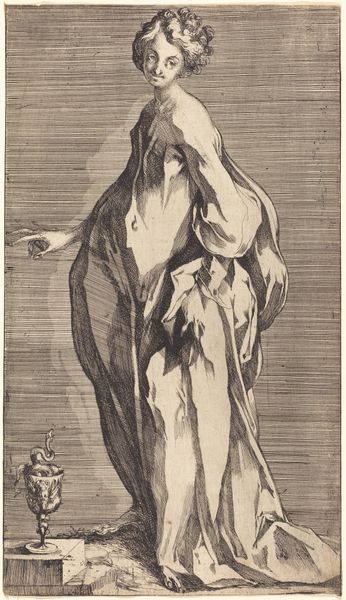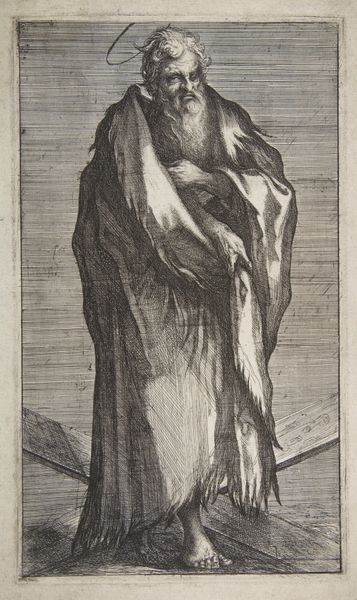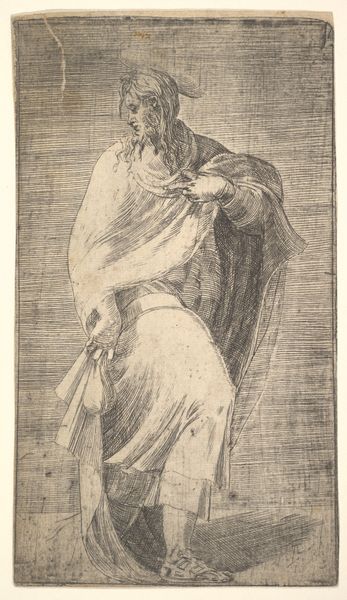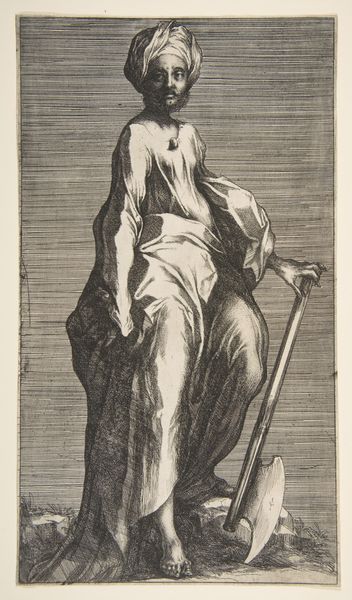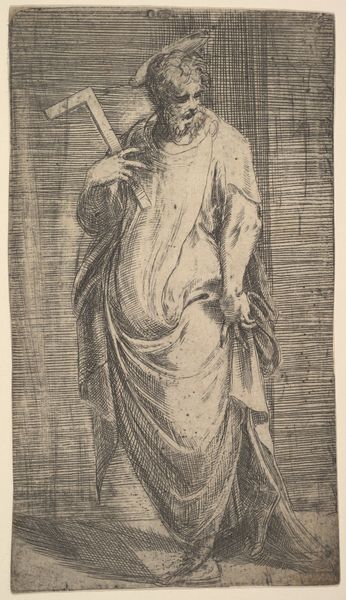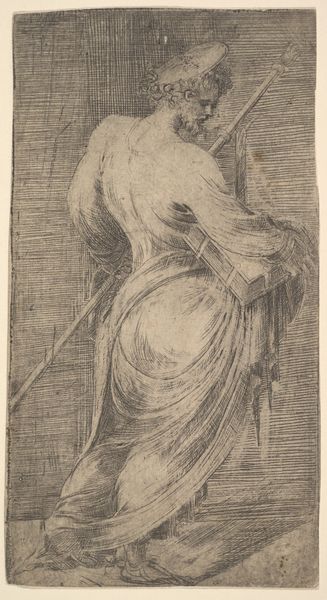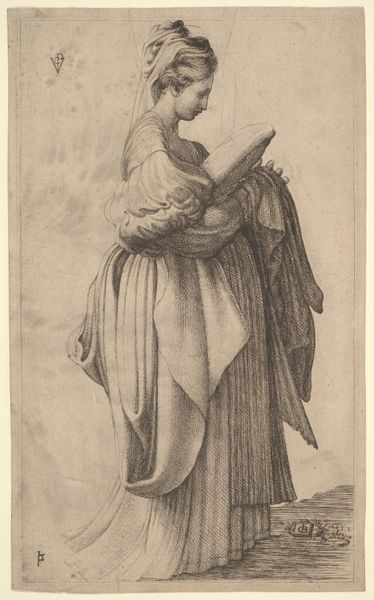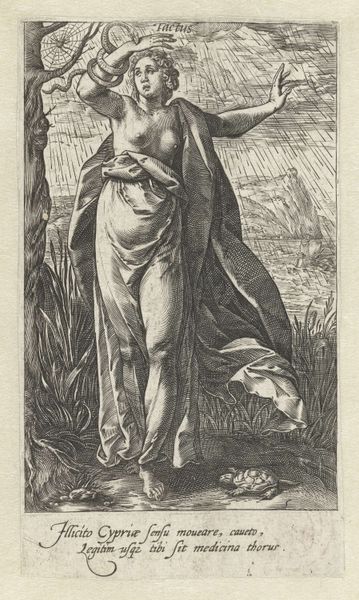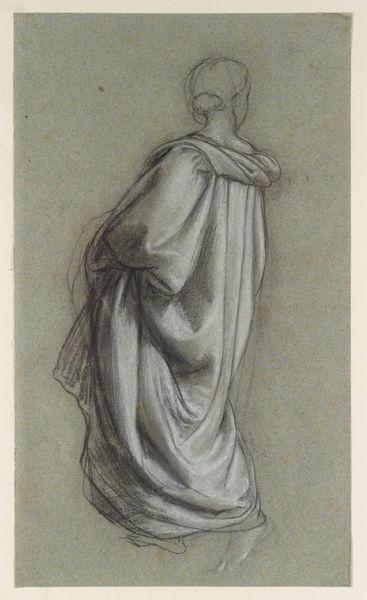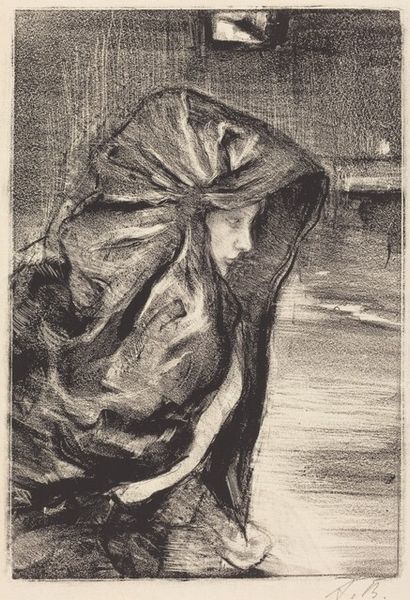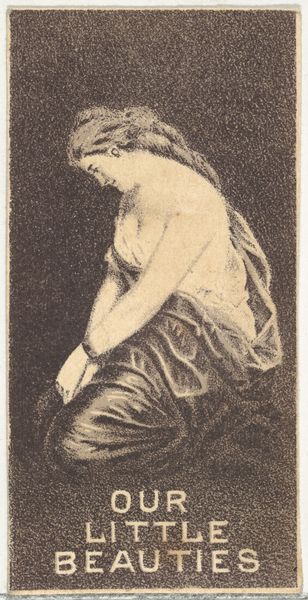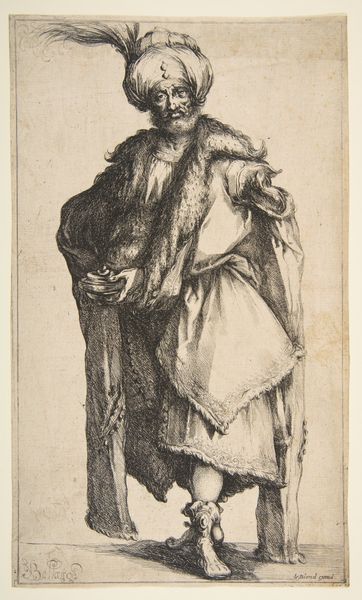
drawing, print, etching, intaglio
#
drawing
# print
#
etching
#
intaglio
#
mannerism
#
figuration
#
history-painting
Dimensions: Sheet: 14 1/4 × 9 7/16 in. (36.2 × 23.9 cm) Plate: 11 5/16 × 6 11/16 in. (28.7 × 17 cm)
Copyright: Public Domain
Curator: Here we have Jacques Bellange's "Saint Jacob Minor," an etching, and intaglio print dating from roughly 1595 to 1616. It resides here at the Metropolitan Museum of Art. Editor: My first impression is the sheer dynamism captured through line work. There’s a forward momentum, even though we only see the figure from behind. The fabric is particularly striking in its textural complexity. Curator: Bellange's Mannerist style certainly lends itself to that dynamism. This piece reveals fascinating aspects of early modern religious art. Consider the figure of Saint Jacob. He is not presented in the typical triumphant or overtly pious pose we see in Counter-Reformation art, but rather, with an emphasis on introspection. Editor: Indeed. And how skillfully he uses line to imply volume! Notice the deeply etched contours that define the saint’s back and shoulders, contrasted with the delicate, almost fluttering lines that create the folds of his drapery. The whole composition pushes and pulls, engaging the eye in a constant dance of light and shadow. Curator: Bellange lived and worked during a period of intense religious and political upheaval. His native Lorraine was caught between Catholic France and the Protestant German states. Prints like these had the power to circulate ideas but also offered a kind of psychological engagement. Here we have a saint in contemplative action. I think that might invite reflection on faith, devotion, and perhaps even resistance. The viewer is prompted to complete a visual and conceptual journey alongside Jacob. Editor: You're right. Looking closer, I appreciate how Bellange used varying densities of lines to create the illusion of depth and shadow, almost sculpting the figure from the flat surface. The subtle gradations in tone are truly remarkable. Curator: And notice, also, how that background space almost recedes—as though opening an existential framework for this figure's being, his spiritual presence in an age defined by dogmatic reform and entrenched political ideology. Editor: Thank you. Seeing your analysis of this print expands the work beyond pure aesthetics and technical skill. Curator: It's about linking historical narratives to contemporary understandings, ultimately highlighting art’s function as both document and discourse.
Comments
No comments
Be the first to comment and join the conversation on the ultimate creative platform.
